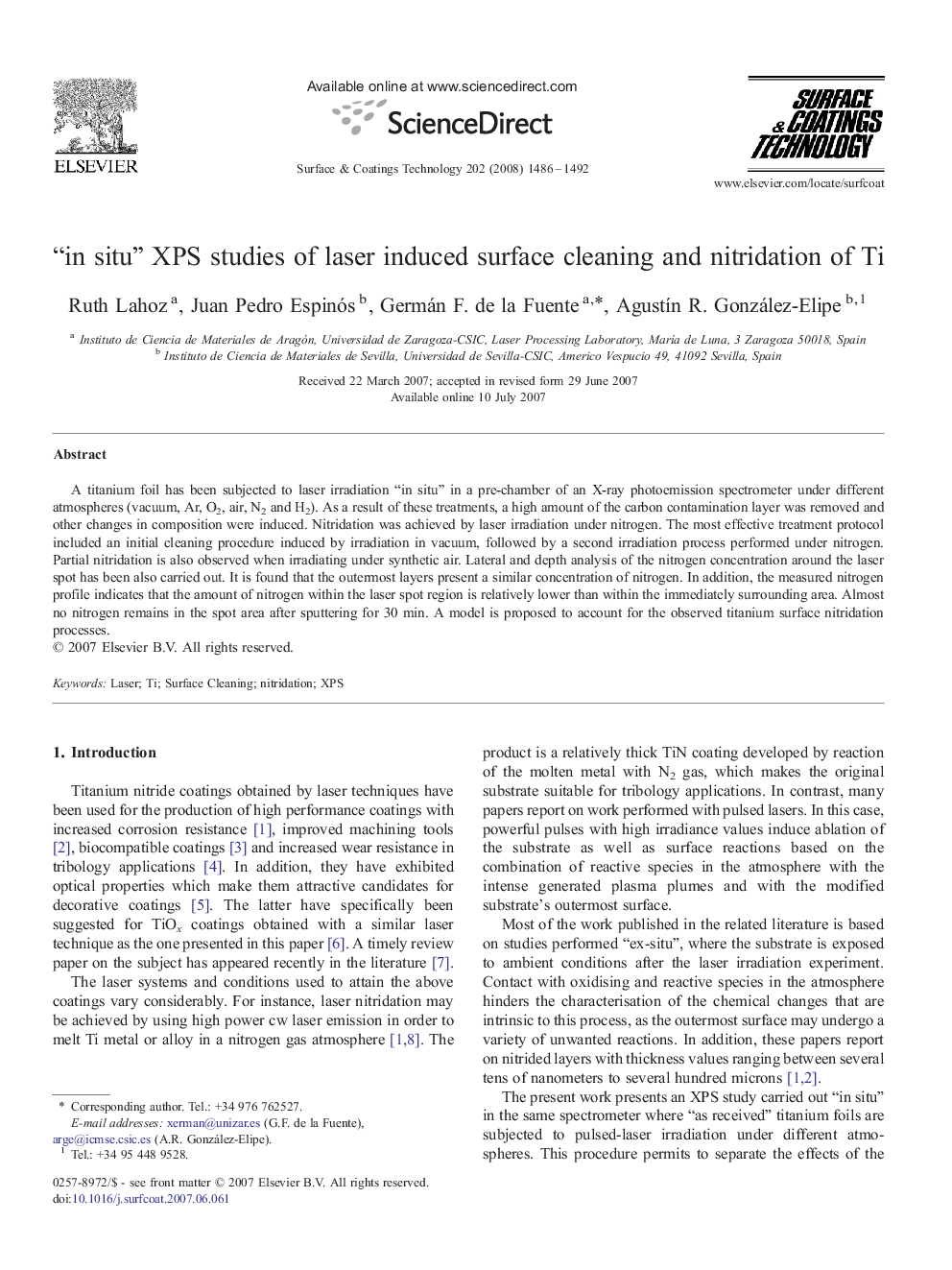| Article ID | Journal | Published Year | Pages | File Type |
|---|---|---|---|---|
| 1662061 | Surface and Coatings Technology | 2008 | 7 Pages |
A titanium foil has been subjected to laser irradiation “in situ” in a pre-chamber of an X-ray photoemission spectrometer under different atmospheres (vacuum, Ar, O2, air, N2 and H2). As a result of these treatments, a high amount of the carbon contamination layer was removed and other changes in composition were induced. Nitridation was achieved by laser irradiation under nitrogen. The most effective treatment protocol included an initial cleaning procedure induced by irradiation in vacuum, followed by a second irradiation process performed under nitrogen. Partial nitridation is also observed when irradiating under synthetic air. Lateral and depth analysis of the nitrogen concentration around the laser spot has been also carried out. It is found that the outermost layers present a similar concentration of nitrogen. In addition, the measured nitrogen profile indicates that the amount of nitrogen within the laser spot region is relatively lower than within the immediately surrounding area. Almost no nitrogen remains in the spot area after sputtering for 30 min. A model is proposed to account for the observed titanium surface nitridation processes.
